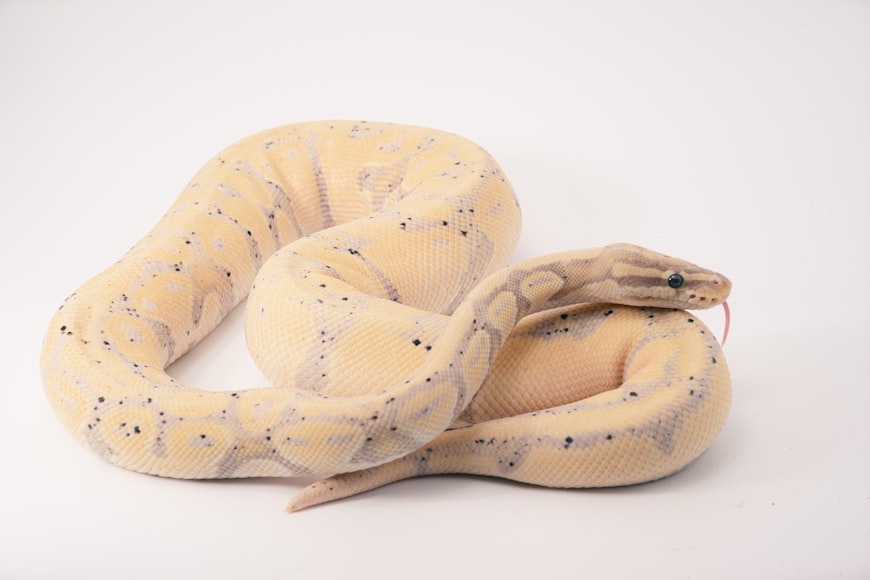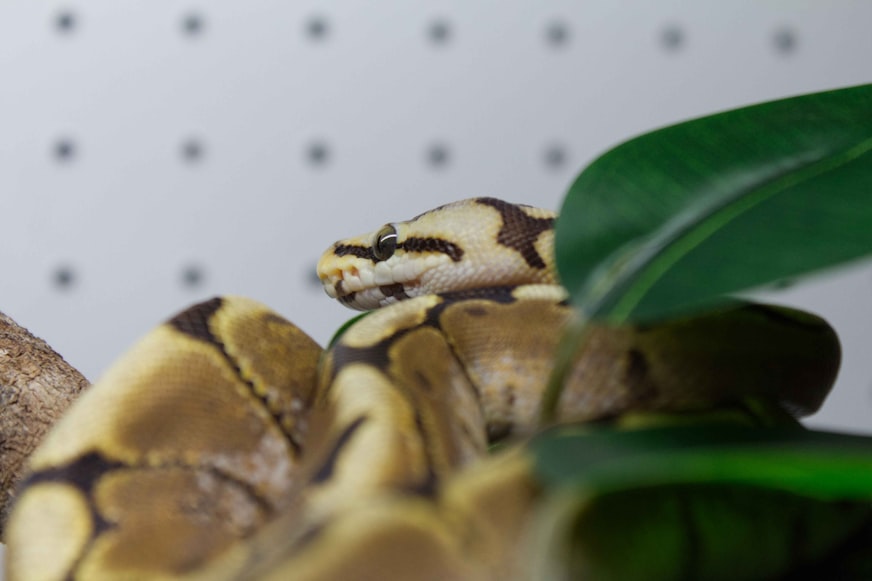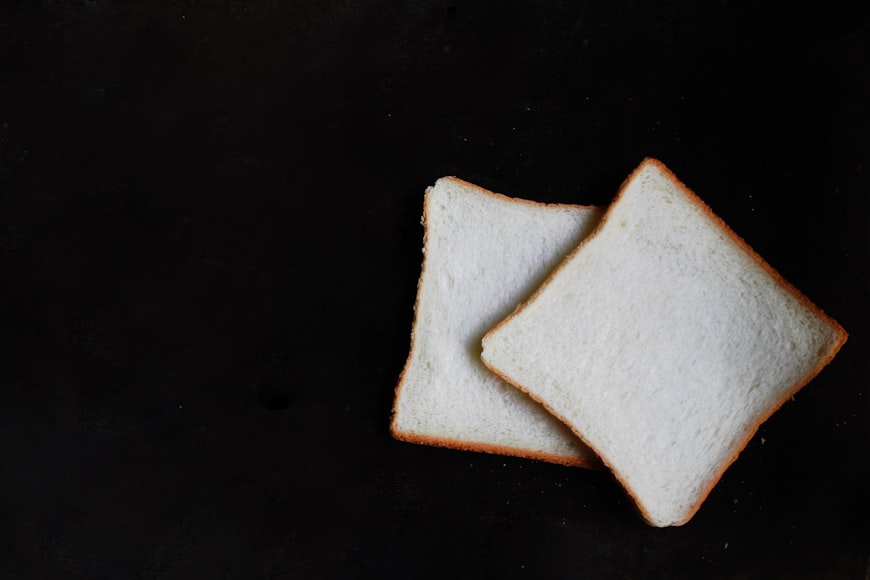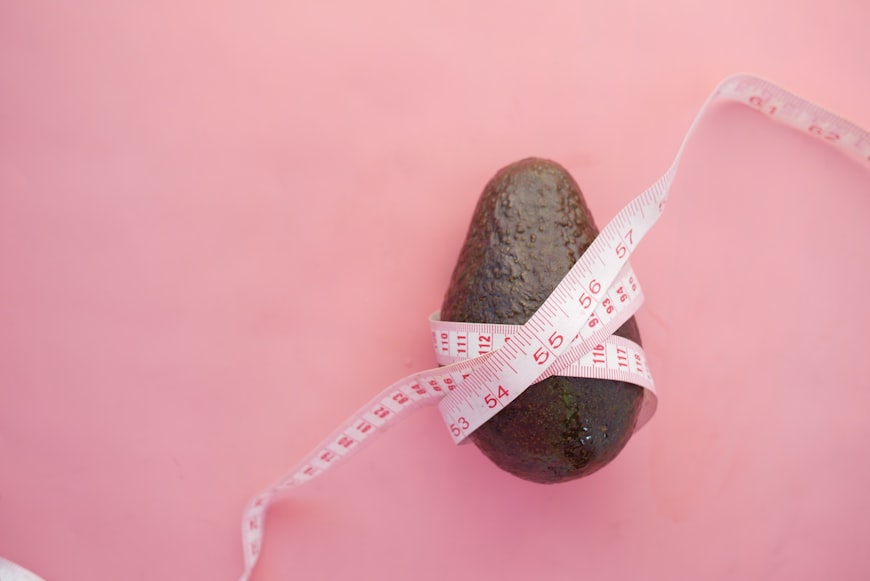Ball Python Snake Care and Information

Introduction
The ball python (Python regius), also known as the royal python, is a popular pet snake due to its docile temperament and striking appearance. Native to sub-Saharan Africa, these snakes are relatively small, making them suitable for a variety of enclosures.
Appearance and Size
Ball pythons typically have a dark brown or black base color with intricate patterns of yellow, white, or cream. They have triangular heads and smooth scales. Adult ball pythons average around 3-5 feet in length.
Temperament
Ball pythons are generally considered one of the friendliest and docile snakes. They are known for their calm and laid-back nature, making them suitable for handlers of all experience levels. However, like any reptile, they should be handled with caution and supervision.
Enclosure
Ball pythons need an enclosure that is large enough to accommodate their size and provide adequate space for exploration. A 30-gallon terrarium is recommended for a single adult python. The enclosure should include hiding places, such as caves or logs, as well as a water bowl large enough for the snake to soak in.
Substrate
The substrate, which covers the bottom of the terrarium, should be absorbent and provide some burrowing opportunities. Suitable options include Aspen shavings, reptile bark, or paper towels.
Heating
Ball pythons are tropical snakes and require a temperature gradient within their enclosure. The warm end should be maintained at 85-90°F (29-32°C), while the cool end should be around 75-80°F (24-27°C). Under-tank heaters or heat lamps can be used to maintain the desired temperatures.
Lighting
Ball pythons do not require special lighting, but they appreciate a natural day/night cycle. A 10-12 hour light cycle is recommended.
Feeding
Ball pythons are carnivores and primarily feed on rodents such as mice and rats. The frequency and size of meals will depend on the age and size of the snake. Young snakes should be fed more frequently, while adults can be fed once every 1-2 weeks. Live prey is generally not recommended due to the risk of injury.
Water
Ball pythons require access to fresh, clean water at all times. Their water bowl should be large enough for them to soak in and should be cleaned regularly.
Humidity
Ball pythons require a humidity level of around 50-60%. This can be achieved by misting the enclosure regularly or using a humidifier.
Health
Regular veterinary checkups are recommended for ball pythons. Common health problems include respiratory infections, digestive problems, and skin issues. It is important to seek veterinary attention promptly if you notice any abnormalities in your snake’s behavior or appearance.
Conclusion
Ball pythons are fascinating and rewarding pets that can provide years of enjoyment. By providing proper care and a suitable environment, you can ensure the health and happiness of your ball python companion.
Introduction

Introduction
Ball pythons (Python regius) are captivating reptiles that have gained immense popularity as pets due to their docile and easy-going nature. These enigmatic creatures boast unique characteristics that make them both fascinating and rewarding companions.
Basic Information and Characteristics
- Size: Ball pythons are moderate-sized snakes, typically reaching lengths of 3-5 feet as adults.
- Body Shape: Their bodies are sturdy and muscular, with a distinct “balling” behavior when threatened.
- Coloration: They display a wide range of color morphs, including black, brown, white, and yellow, with intricate patterns and markings.
- Anatomy: Ball pythons possess infrared-sensing pits that enable them to detect prey. Additionally, they have sharp, recurved teeth that are used for holding and killing their food.
- Temperament: Ball pythons are generally docile and gentle, making them suitable for both experienced and novice snake owners.
Natural Habitat and Geographic Distribution
- Habitat: Ball pythons are native to the savannas, grasslands, and forests of sub-Saharan Africa. They prefer warm, humid environments with ample hiding places.
- Geographic Distribution: They are found in countries including Senegal, Mali, Guinea, Togo, Benin, Nigeria, Cameroon, Chad, Niger, Burkina Faso, and Ghana.
Additional Notes
- Ball pythons are nocturnal, meaning they are most active at night.
- They are solitary creatures that only come together for mating.
- Their diet consists primarily of small rodents and birds.
- They can live for up to 30 years in captivity with proper care.
Conclusion
Ball pythons are captivating creatures that make ideal pets for those seeking a docile and easy-to-care-for reptile companion. Their unique characteristics, captivating appearance, and gentle nature make them a joy to observe and interact with. By providing them with proper housing, nutrition, and care, owners can enjoy the companionship of these fascinating snakes for many years to come.
Housing

As a dedicated Ball Python Snake pet blogger, ensuring the well-being of these captivating creatures is paramount. One of the most crucial aspects of their care is providing an appropriate housing environment that meets their specific needs. Let’s delve into the essential housing elements for Ball Python Snakes:
1. Enclosure Size and Type:
-
Enclosure Size: Ball Pythons require enclosures that provide ample space for movement and thermoregulation. The minimum recommended enclosure size for an adult Ball Python is 36″ x 18″ x 18″.
-
Enclosure Type: Glass or plastic aquariums with secure lids are ideal for housing Ball Pythons. Screen enclosures are not suitable as they can result in dehydration.
2. Substrate and Humidity Requirements:
-
Substrate: Various substrates can be used, including aspen shavings, coconut husk, reptile carpet, and paper towels. The substrate should be absorbent and provide adequate moisture retention to maintain the required humidity levels.
-
Humidity: Ball Pythons require a humid environment, with the humidity ranging between 50-60%. This can be achieved by placing a water dish in the enclosure and providing a humid hide, such as a covered box with a small opening.
3. Heating and Lighting:
-
Heating: Ball Pythons are ectothermic and rely on external heat sources to regulate their body temperature. Provide a heat gradient within the enclosure, with one end being warm (88-96°F) and the other end cooler (75-82°F). This can be achieved using a heat lamp or an under-tank heater.
-
Lighting: Ball Pythons are nocturnal and do not require special lighting. However, they do benefit from having a natural day/night cycle. Provide a 12-hour light and 12-hour dark cycle by using a timer or a light-sensing bulb.
Additional Tips:
- Clutter: Provide plenty of hides, such as caves or tunnels, to allow your Ball Python to feel secure and comfortable.
- Water: Provide a shallow water dish large enough for your snake to fully submerge.
- Cleanliness: Spot-clean the enclosure regularly and do a complete cleaning once a month to maintain hygiene.
By adhering to these housing guidelines, you can provide a comfortable and healthy environment for your Ball Python Snake, fostering their well-being and ensuring their optimal care.
Feeding

As a responsible Ball Python Snake owner, ensuring proper nutrition is crucial for their well-being and longevity. This article provides a comprehensive guide to feeding practices, including:
1. Diet and Prey Size:
Ball Pythons are constrictors that feed exclusively on rodents. The appropriate prey size depends on the snake’s age and size:
- Hatchlings: Small mice (10-15 grams)
- Juveniles: Medium mice (15-30 grams)
- Sub-adults: Large mice (30-50 grams)
- Adults: Medium to large rats (50-200 grams)
2. Feeding Frequency and Schedule:
Feeding frequency varies depending on the snake’s age:
- Hatchlings: Weekly
- Juveniles: Every 5-7 days
- Sub-adults: Every 7-10 days
- Adults: Every 10-14 days
Establish a regular feeding schedule and avoid overfeeding.
3. Live vs. Frozen Prey:
There are two options for feeding Ball Pythons:
Live Prey:
- Advantages: Provides natural hunting stimulation.
- Disadvantages: Can be hazardous to the snake if the prey escapes or fights back.
Frozen Prey:
- Advantages: Safer and more convenient.
- Disadvantages: May require training the snake to accept it.
Best Practice:
Most experienced snake keepers prefer frozen prey as it eliminates the risks associated with live prey.
4. Feeding Process:
- Pre-Feeding: Thaw frozen prey thoroughly before feeding.
- Offer: Use long-handled tongs or snake hooks to offer the prey to the snake.
- Strike: Allow the snake to strike and constrict its prey.
- Post-Feeding: Supervise the snake while it eats.
- Cleanup: Remove the prey and any uneaten remains once the snake is finished.
Additional Tips:
- Avoid handling the snake for 24 hours after feeding.
- Provide a warm and humid environment for digestion.
- Monitor the snake’s weight to ensure it is growing and feeding adequately.
- Consult a qualified veterinarian if you have any concerns about your snake’s feeding habits.
By following these guidelines, you can ensure your Ball Python Snake receives the proper nutrition it needs to thrive and live a healthy life.
Handling

Frequency and Proper Techniques
Handling a ball python regularly is essential for their health and well-being. It allows you to monitor their health, clean their cage, and build a bond with them.
The frequency of handling varies depending on the snake’s age and temperament. Young snakes may need to be handled more frequently, while older snakes can go longer periods without attention.
Proper handling techniques include:
- Support their body: Cradle the snake’s body with one hand, supporting the base of their tail with the other.
- Hold them firmly: Avoid gripping too tightly, but ensure they feel secure in your hands.
- Move slowly: Snakes can feel threatened by sudden movements. Make gentle, fluid movements when handling them.
- Avoid holding them upside down: This can cause them stress and discomfort.
Safety Precautions
Handling a ball python can be safe if proper precautions are taken:
- Wash your hands: Always wash your hands before and after handling your snake to prevent the spread of bacteria.
- Choose the right time: Do not handle your snake when it is eating, shedding, or stressed.
- Be aware of their body language: Snakes communicate primarily through body language. Signs of stress include hissing, flattening their head, or coiling up tightly.
- Avoid making sudden movements: Snakes have poor eyesight and can be startled by sudden movements. Approach them calmly and slowly.
- Do not force them: If your snake does not want to be handled, do not persist. Respect their boundaries.
Body Language Indicators
Understanding your ball python’s body language can help you avoid stress and potential bites.
Positive Indicators:
- Relaxed body posture
- Flicking tongue
- Calm facial expression
Negative Indicators:
- Flattened head
- Coiling tightly
- Hissing
- Striking
Conclusion
Handling a ball python is a rewarding experience that can strengthen your bond with your pet. By following proper techniques and safety precautions, you can ensure a positive and stress-free handling experience. Remember to be patient, observant, and always respect your snake’s boundaries.
Health Care
Common Diseases and Their Symptoms:
- Respiratory Infection: Sneezing, wheezing, nasal discharge, difficulty breathing
- Gastrointestinal Disease: Vomiting, diarrhea, loss of appetite, lethargy
- Skin Infection: Redness, swelling, discharge, crusting
- Scale Rot: Soft, discolored scales that fall off
- Mouth Rot: Ulcers, swelling, discharge in the mouth
Veterinary Care and Preventive Measures:
- Regular vet checkups are crucial for early disease detection and treatment.
- Quarantine new snakes for 30 days to prevent disease transmission.
- Provide a clean and well-maintained enclosure with proper temperature and humidity.
- Feed a balanced diet that meets the snake’s nutritional needs.
- Avoid handling sick snakes excessively.
Shedding and Ecdysis:
- Ball pythons typically shed their skin 4-6 times per year.
- Before shedding, they may become dull-colored and go off feed.
- The old skin will loosen and the snake will rub against objects to remove it.
- It is important to provide humidity during shedding to help the snake shed easily.
- If the snake has difficulty shedding, it may require veterinary assistance.
Shedding Problems:
- Dysecdysis: Failure to shed properly, resulting in retained skin.
- Retained Eyecaps: When the old skin over the eyes is not shed.
- Adhesion: When the old skin sticks to the new skin.
Preventing Shedding Problems:
- Ensure adequate humidity during shedding.
- Provide rough surfaces in the enclosure for the snake to rub against.
- Monitor the shedding process and seek veterinary assistance if any difficulties arise.
Additional Tips for Maintaining a Healthy Ball Python:
- Handle the snake gently and avoid excessive stress.
- Keep the enclosure clean and provide fresh water daily.
- Monitor the snake’s weight and behavior regularly.
- Seek veterinary care promptly if you notice any health concerns.
Remember, a healthy ball python is a happy ball python. By following these healthcare guidelines, you can ensure your pet’s well-being and provide them with a long and fulfilling life.
Reproduction
Ball pythons, also known as royal pythons, are popular pet snakes known for their docile nature and beautiful patterns. Understanding their reproduction cycle is crucial for responsible pet ownership and successful breeding.
Breeding Season and Courtship Behavior
- Seasonality: Ball pythons are seasonal breeders, with their breeding season typically occurring between November and April.
- Courtship: Courtship behavior involves the male snake actively pursuing and attempting to gain the attention of the female. He may circle her, rub his face on her, and occasionally “dance” by flicking his tail on the ground.
- Scent marking: The male snake releases pheromones from his glands to attract the female. She may follow the scent trails and respond positively to his advances.
Male and Female Pairing
- Size: Females are typically larger than males, with mature females reaching weights of 1,800-3,500 grams, while males weigh around 1,200-1,900 grams.
- Sex determination: Determining the sex of ball pythons can be challenging without probing or DNA testing. However, males typically have a thicker tail base with prominent spurs, known as hemipenes.
- Pairing: Once the female is receptive, the male will coil around her body to align their cloacas, the openings through which sperm is transferred.
Egg Laying and Incubation
- Oviparity: Ball pythons are oviparous, meaning they lay eggs rather than giving birth to live young.
- Egg-laying: After a successful pairing, the female will retain the fertilized eggs inside her body for a period of 60-90 days before laying them. She will seek out a suitable nesting site, such as a moist hide or hollow log, and lay a clutch of 3-10 eggs.
- Incubation: The eggs require a temperature range of 85-90 degrees Fahrenheit (29-32 degrees Celsius) and a humidity level of 80-90%. Incubation typically lasts for 55-65 days, depending on the temperature and humidity.
- Hatchlings: Upon hatching, ball python hatchlings are small, weighing around 20-30 grams. They are fully independent from birth and begin feeding on small rodents.
Additional Notes
- Multiple clutches: Ball pythons can lay multiple clutches of eggs during the breeding season.
- Egg retention: If the conditions are not optimal, the female may retain the eggs for extended periods.
- Hatchling care: Hatchlings require specialized care, including appropriate enclosure size, temperature gradients, humidity, and a consistent food source.
- Veterinary consultation: It is essential to consult with a qualified reptile veterinarian for proper breeding advice, egg incubation, and hatchling care.
By understanding the reproduction cycle of ball pythons, responsible pet owners can provide the necessary care and conditions to ensure successful breeding and healthy offspring.
Behavior
Ball pythons (Python regius), also known as royal pythons, are captivating reptile pets known for their docile nature and unique behaviors. Understanding their temperament, activity patterns, and defense mechanisms will enhance your bond and ensure their well-being.
Temperament and Handling Characteristics
Ball pythons typically have a gentle and calm disposition, making them suitable for handling. They are not prone to biting or aggression and generally tolerate being held and petted. However, it’s important to handle them with care, as they are constrictors and can wrap around their handler’s arms or neck if startled or agitated.
When handling a ball python, support its body firmly and avoid squeezing or applying excessive pressure. Allow them to move around at their own pace and respect their personal space. Regular handling helps them become accustomed to human interaction and reduces stress during cage cleaning or veterinary examinations.
Nocturnal Activity Patterns
Ball pythons are nocturnal, meaning they are most active at night. They spend daylight hours hiding in burrows, under rocks, or in dense vegetation. As the sun sets, they emerge to hunt for food, such as rodents and small birds.
It’s essential to adjust their feeding and lighting schedules accordingly. Nighttime feeding ensures they receive their meals when they are naturally active. Provide them with a hide box where they can retreat during the day for privacy and a sense of security.
Defense Mechanisms
Ball pythons have several defense mechanisms to protect themselves from predators:
- Constriction: They wrap their muscular coils around their prey, constricting its breathing and causing suffocation.
- Biting: While rare, ball pythons may bite if they feel threatened. Their bites are usually non-venomous and intended as a deterrent rather than an attack.
- Regurgitation: If they feel overwhelmed or unable to swallow their prey, they may regurgitate the food as a form of escape.
- Musk: They secrete a foul-smelling musk from their cloaca as a last resort to repel predators.
By understanding these behaviors, you can provide a safe and enriching environment for your ball python, while respecting their natural instincts and characteristics.
Conservation Status
Introduction:
The ball python (Python regius) is a popular pet snake known for its docile nature and striking coloration. However, wild ball python populations face significant threats that warrant conservation efforts.
Threats to Ball Python Populations:
- Habitat Loss and Fragmentation: Deforestation and agricultural expansion have rapidly reduced ball python habitat, isolating populations and hindering their movement.
- Over-Collecting for the Pet Trade: The high demand for ball pythons as pets has led to excessive collection from the wild, reducing their numbers and disrupting population dynamics.
- Illegal Wildlife Trafficking: Ball pythons are illegally trafficked across borders, often for the exotic pet trade. This illicit activity poses a grave threat to their survival.
- Climate Change: Extreme weather events and rising temperatures can alter habitat conditions, making them less suitable for ball pythons.
- Pathogenic Diseases: Emerging diseases, such as snake fungal disease, can decimate ball python populations.
Conservation Efforts and Protection Measures:
- Habitat Protection and Restoration: Conservation organizations are working to protect and restore critical ball python habitat, ensuring that they have adequate space to thrive.
- Captive Breeding Programs: Captive breeding programs aim to supplement wild populations and provide a source of sustainable pet individuals.
- Enforcement of Wildlife Laws: Governments are strengthening wildlife laws and enforcement to combat illegal collection and trafficking.
- Public Education and Awareness: Raising awareness about the threats facing ball pythons is essential to encourage conservation efforts and discourage harmful practices.
- Support for Research and Monitoring: Ongoing research and monitoring programs are critical for understanding ball python biology and implementing effective conservation measures.
Conclusion:
The ball python is a valuable species facing significant threats in the wild. Conservation efforts are imperative to protect their populations and ensure their long-term survival. By addressing habitat loss, reducing over-collection, combating illegal trafficking, mitigating climate change impacts, and supporting research and education, we can contribute to the preservation of this iconic snake. It is crucial for pet owners and the general public to recognize the importance of conservation and play a role in protecting our native wildlife.

















